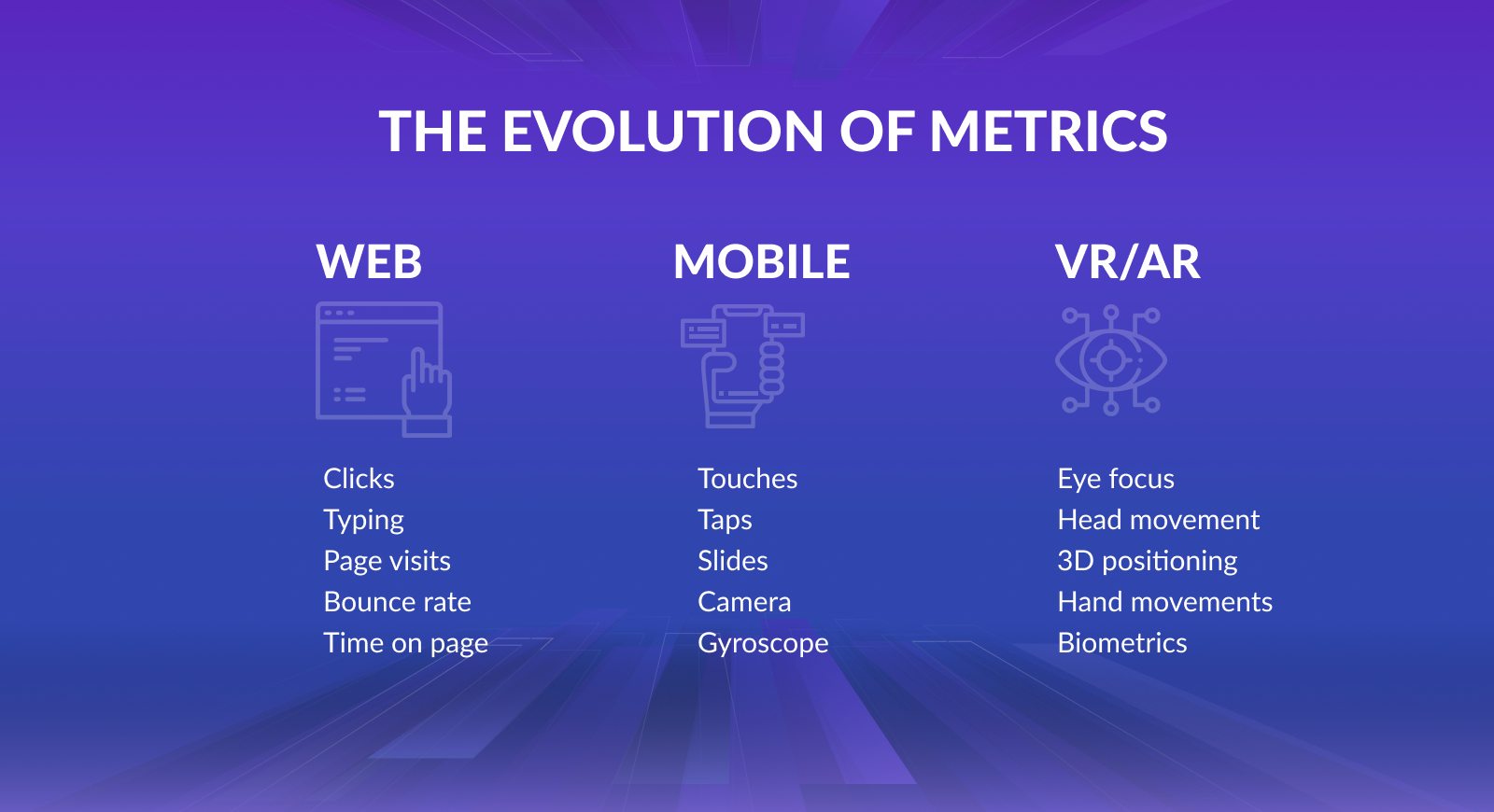The Metaverse and How to Measure It




What is the metaverse?
The metaverse has been talked about for a long time, with origins of the term from the 1992 science fiction novel Snow Crash

Image credit: Victor Gil
The foundation of the metaverse is being built all around us. What was once considered science fiction has finally arrived and we can see the first building blocks.
Immersive technologies have achieved exponential growth in adoption and last year, Facebook’s rebrand to Meta propelled the concept of the metaverse into mainstream consciousness.
But social games like Habbo Hotel and Second Life were the first editions of the metaverse. These games began as iterations on traditional online chat by providing users with agency and embodiment of their avatar.
Users also had the ability to customize the look and feel of their avatar, interact with others and explore different worlds. Like the metaverse, social games differ from traditional MMOs (Massively Multiplayer Online Games) because they don't have any set goals or outcomes.
The current generation of these games include:
- Roblox
- Fortnite
- Rec Room
- Alt Space
- VR Chat
Foundational metaverse platforms provide users with embodiment of their avatars and the ability to build worlds.
The next step of the metaverse should include these concepts:
Interoperability:
Metaverse experiences should be connected to each other so that users can bring their avatars with them across different experiences and travel freely
There should be a discovery model that connects different metaverse experiences and allows users to find them. The full opportunity of the metaverse will be realized when users can take their embodiment with them.
For example: Users should be able to create an avatar on Rec Room and move from experience to experience. The fluid avatar still hasn't been defined yet but we believe it will be a part of the multi-platform metaverse.
Standards and protocols:
Users should be able to put a headset on any platform and participate in any metaverse. Metaverses should facilitate the transit between multiple platforms.
We will look to organisations like Khronos and IEEE for guidelines on how things should be created. The true nature and opportunities of the metaverse can be realized when connections happen between the applications.
Measuring and understand the metaverse

On web platforms, it’s important to understand how long users spent on a page and what they clicked on.
But mobile platforms provided new sensors like gyroscopes, geolocation, compass orientation. This enabled new ways to understand user behavior.
Immersive platforms have once again introduced new sensors and metrics. Eye tracking, movement through 3D spaces, hand positioning and biometrics provide an exponentially richer sensor environment.
User participation is also much more involved, providing deeper insights into human behavior. Immersive technology is exponentially more personal and behavioral, where users have agency within simulations.
Spatial analytics leverage the paradigm switch from user content consumption in web and mobile towards content participation in immersive experiences.
Immersive platforms also allow for creative chaos: users have the ability to create any reality, and the outcomes are not predictable.
In contrast, web and mobile were very predictable because you can create strict steps and funnels for users to go through.
Users have much greater agency in immersive experiences: The question is how do we optimize and understand user behavior and engagement in 3D spaces?
3 Steps For Collecting and Analyzing Data in the Metaverse
On an immersive platform, it’s important to focus on tracking users within 3D space and where things happen. Develop a hypothesis and plan how you are going to collect the data to prove or disprove and come to a conclusion.
Where something happens is a very valuable action and it’s important to understand geospatial context.
Separate the signal from the noise by creating a structured process for measuring success.
Looking for behavioral patterns that lead to or detract from desired outcomes.
Responsible Data Collection:
- Collect what you need to provide to your customer - nothing more. The idea is to build a better application.
- User data is not for sale
- Only collect data after getting consent
- If you need eye tracking or biometrics, treat it like health data. Eye tracking is important for situational awareness. For example: in training law enforcement, it is necessary to qualify that officers have full situational awareness of the environment. Lower quality metrics like inferred gaze aren’t enough.
- Respect and facilitate privacy laws. End users can request for data to be deleted.
We are looking at releasing an open sourced consent framework. We’ll build a do not track signal and implement into our SDK.
Early Access to Platform
- Are you a consumer-based VR/AR application that requires spatial analytics? Drop us an email to beta@cognitive3d.com or contact us through our website to apply.